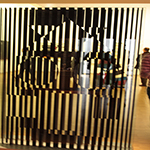Euroacademia Conferences
 Europe Inside-Out: Europe and Europeanness Exposed to Plural Observers (9th Edition) April 24 - 25, 2020
Europe Inside-Out: Europe and Europeanness Exposed to Plural Observers (9th Edition) April 24 - 25, 2020 Identities and Identifications: Politicized Uses of Collective Identities (9th Edition) June 12 - 13, 2020
Identities and Identifications: Politicized Uses of Collective Identities (9th Edition) June 12 - 13, 2020 8th Forum of Critical Studies: Asking Big Questions Again January 24 - 25, 2020
8th Forum of Critical Studies: Asking Big Questions Again January 24 - 25, 2020 Re-Inventing Eastern Europe (7th Edition) December 13 - 14, 2019
Re-Inventing Eastern Europe (7th Edition) December 13 - 14, 2019 The European Union and the Politicization of Europe (8th Edition) October 25 - 26, 2019
The European Union and the Politicization of Europe (8th Edition) October 25 - 26, 2019 Identities and Identifications: Politicized Uses of Collective Identities (8th Edition) June 28 - 29, 2019
Identities and Identifications: Politicized Uses of Collective Identities (8th Edition) June 28 - 29, 2019 The European Union and the Politicization of Europe (7th Edition) January 25 - 26, 2019
The European Union and the Politicization of Europe (7th Edition) January 25 - 26, 2019 7th Forum of Critical Studies: Asking Big Questions Again November 23 - 24, 2018
7th Forum of Critical Studies: Asking Big Questions Again November 23 - 24, 2018 Europe Inside-Out: Europe and Europeanness Exposed to Plural Observers (8th Edition) September 28 - 30, 2018
Europe Inside-Out: Europe and Europeanness Exposed to Plural Observers (8th Edition) September 28 - 30, 2018 Identities and Identifications: Politicized Uses of Collective Identities (7th Edition) June 14 - 15, 2018
Identities and Identifications: Politicized Uses of Collective Identities (7th Edition) June 14 - 15, 2018
Visualising Securitisation and De-Securitisation of Migration in the Mediterranean: A Critical Iconologyof Migrant Images in the Media and on the Social Networks
-
-

-
Presentation speakers
- Daniela Lenčéš Chalániová, School of International Relations and Diplomacy, Anglo-American University, Prague
Abstract:
Over the past few weeks, media have been filled with images of people of colour clinging for their dear lives to flotsam in the rough seas of the Mediterranean, of migrant traffickers’ boats overflowing with bodies, both in the context of a disaster that cost over 700 lives when one such boat capsized at the end of April, and in the context of a heated EU debate about (migrant) redistribution quotas across the member countries. What we are witnessing these days is an increased securitization of migration, with the latest catastrophe pushing the problem into the realm of “the exceptional” requiring introduction of new measures such as the quotas, boat sinking, perhaps even a military operation on Libyan soil. In my contribution, I want to trace the recent visual discourse surrounding (im)migration across the mainstream online media and across selected social networks to show, on the one hand, the continued social construction of a migrant as the Other/Threat/Plague, as Francesca Falk brilliantly shows in her book chapter explaining that the European stock photo agencies by depicting the European rescuers in hazmat suits and masks create a social reality in which the “territorial borders are superimposed on the boundaries of the body; migration appears at the same time as an assault upon the integrity of one’s own and Europe’s body” (Falk 2010: 183). On the other hand, I want to show also the counterdiscourse that delegitimizes the politics of “the exceptional” – ahumorous and politically incorrect discourse of the social media;for example by turning the logic of an image of migrants as a “swarm” (see Image 2) on its head by putting high-level EU representative themselves on a boat. Venturing into the realm of the visual is crucial for the mediatized world of the present day, as “in an increasingly media-saturated environment, ignoring visual imagery provides less and less satisfactory work” (Dauber 2001: 209 in Williams 2003: 526). In the referenced article Michael Williams argued that “any theory that is premised on the social impact of communicative action must assess the impact that different mediums of communication have on the [speech-] acts, their impacts, and their influence on the processes of securitization” (2003: 526).
Williams, Michael C. (2003): ‘Words, Images, Enemies: Securitization and International Politics’, International Studies Quarterly 47(4): 511-531
Falk, Francesca (2010): ‘Europe – A View from the Margins. Boat People and the Memory of Images’ in Drechsel, Benjamin and Claus Leggewie (eds.)United in Visual Diversity. Images and Counter-Images of Europe. Innsbruck: StudienVerlag: 180 – 185 -
Related Presentations

The Role of the Visual Arts in the Construction of Collective Identity: Hofmannsthal, Dürer and Van Gogh
- Hang-Sun Kim

Seven Wonders of the World: How to Remember Destroyed Artworks
- Francesco Del Sole

Taxonomy of Engagements in Furnishing the City
- Thelma Lazo-Flores















